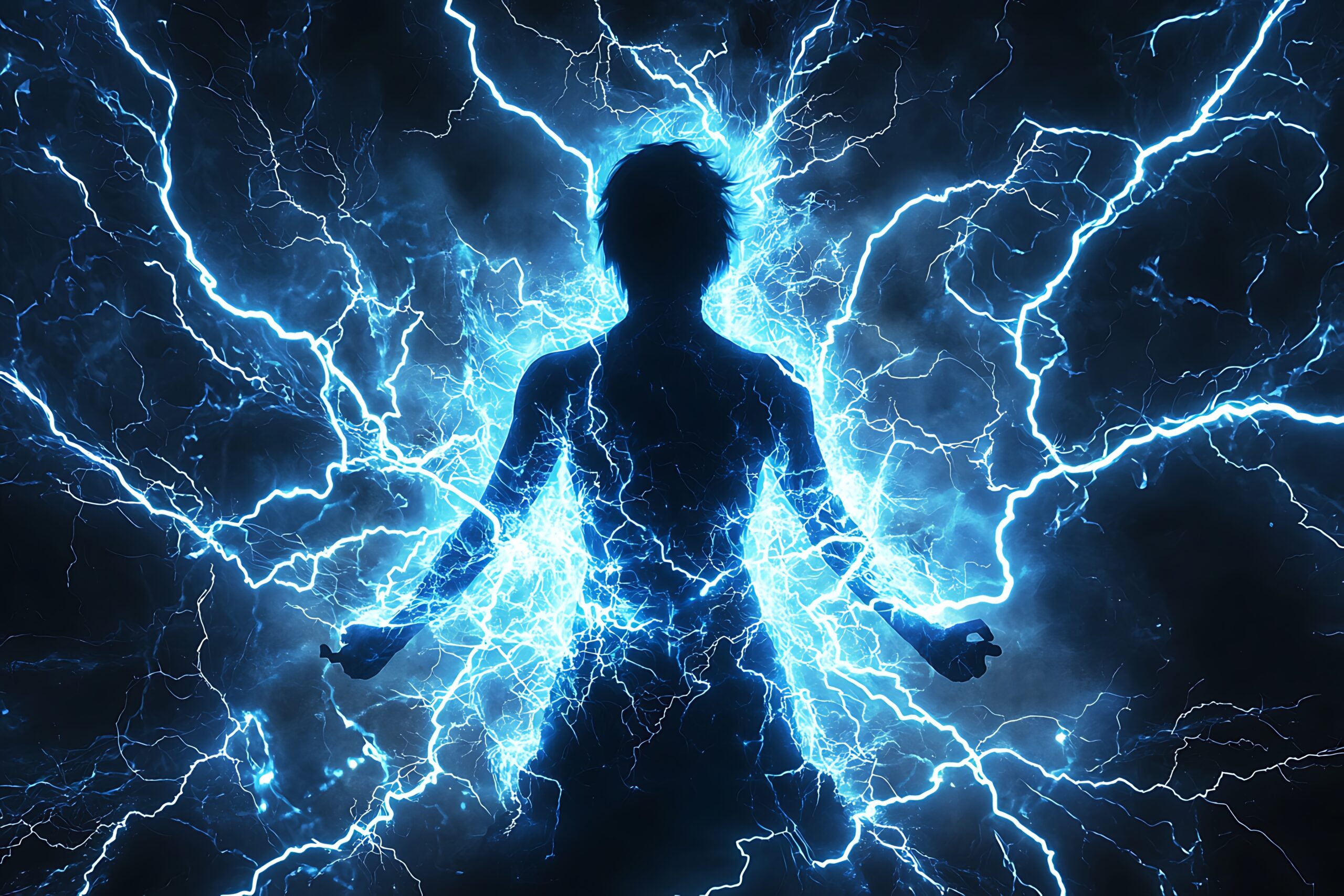How does mindfulness secretly fuel powerful storytelling? Can storytelling be your daily mindfulness ritual without ever meditating? What happens when mindfulness and narrative collide in your brain?
Think mindfulness is all incense and empty thoughts? Think again. This blog unveils how storytelling—yes, that age-old act of spinning tales—becomes a potent form of mindfulness. From the way we describe a simple room to how we frame our life’s chaos, storytelling forces presence, awareness, and emotional depth. It’s not just art—it’s cardio for your focus and empathy.
But it doesn’t stop there. The post dives into how mindfulness enhances your storytelling by sharpening detail, deepening empathy, and transforming everyday moments into meaningful rituals. You’ll learn how crafting your personal narrative each morning can shift your entire mindset—no chanting required. This is mindfulness with edge, intention, and just enough rebellion to keep it interesting.
Mindfulness…that buzzword floating around like a zen master on a cloud of sandalwood and vague promises of inner peace. You’ve heard it in yoga studios, on your favorite meditation app, and probably from that smug friend who just discovered kale smoothies and now wants to lecture you about “being present.”
But here’s a twist for you: storytelling and mindfulness—those seemingly opposite arts of distraction and stillness—are actually lovers in a darkly beautiful dance. Yes, storytelling, that deliciously manipulative craft of weaving facts and fantasies to captivate hearts and minds, shares a secret rendezvous with mindfulness, the art of paying attention without judgment.
Stick with me, because I’m about to reveal six things you didn’t know about how these two worlds collide, entwine, and ultimately elevate each other. And I promise, it won’t involve sitting cross-legged on a mountaintop chanting “om.”
Table of Contents:
- Storytelling Is Mindfulness in Motion
- Mindfulness Sharpens Your Storytelling Sword
- Stories Create Mental Anchors for Mindfulness Practice
- Mindfulness Enhances Empathy — The Heartbeat of Storytelling
- Storytelling as a Mindfulness Ritual—Because Rituals Matter
- Crafting Your Life Story: Mindfulness Turns Chaos Into Meaning
Why You Should Care (Besides Because I Said So)
A Little Challenge, If You Dare
1. Storytelling Is Mindfulness in Motion
Most people think mindfulness means shutting down the noise, emptying the mind, and floating in a void of nothingness. Cute. But true mindfulness is not about escape—it’s about presence. Being utterly, deliciously present.
Now, storytelling—whether you’re spinning a yarn around a campfire, pitching a million-dollar idea, or recounting last night’s debaucherous escapades—is the ultimate exercise in presence. When you tell a story, you’re not just rattling off events; you’re fully inhabiting moments, feeling the emotions, sensing the stakes. You become hyper-aware of detail and nuance—the scent of rain on asphalt, the flicker of doubt in a lover’s eye, the trembling of a villain’s hand.
In other words, storytelling demands mindfulness. It pulls you out of autopilot and forces you to live inside the narrative’s skin. And here’s the kicker: when you listen to a story, your brain lights up in the same regions as if you were living it yourself. Your neurons fire, emotions surge, and suddenly you’re not just hearing—you’re experiencing.
So storytelling isn’t just entertainment—it’s a mindfulness workout disguised as pleasure. Think of it as cardio for your attention span, a way to practice being fully present without the need for a Tibetan singing bowl or incense sticks.
2. Mindfulness Sharpens Your Storytelling Sword
If storytelling is mindfulness in motion, mindfulness itself is the secret weapon of every great raconteur. How can you tell a story that hooks hearts if you don’t notice the subtle details—the quirks, the silences, the fleeting glances that make a scene come alive?
Mindfulness trains you to pay exquisite attention. It slows down the frenzied hamster wheel of your thoughts and hones your senses on the here and now. And the more aware you are, the richer your stories become.
Consider the simple act of describing a room. The non-mindful storyteller might say, “It was a room with furniture.” Snooze. The mindful storyteller sees the cracked leather on the armchair, the faint scent of old whiskey lingering on the curtains, the way the golden light catches dust motes dancing lazily in the afternoon sun.
That’s the difference between a tale that’s forgettable and one that sears itself into the soul.
Mindfulness is the sculptor of sensory detail. It’s the architect of atmosphere. It’s the magician who turns words into worlds.
3. Stories Create Mental Anchors for Mindfulness Practice
Here’s a juicy secret: one of the hardest things about mindfulness is staying mindful. Your brain is a rebel—jumping from thought to thought like a caffeine-fueled squirrel. Focus, it says, then immediately wanders off to argue with itself about last week’s awkward text.
Enter storytelling, stage left. Stories give your wandering mind a place to rest—a mental anchor to return to.
When you tell yourself a story about your life, your goals, or your values, you create a narrative framework that grounds your attention. This internal story acts like a lighthouse in the storm of distractions, guiding you back to what matters.
Meditation apps use this principle all the time—guided stories, visualizations, and reflections designed to keep you tethered to the moment. But you don’t need a fancy app. You can be your own storyteller, crafting internal narratives that remind you who you are, where you’re going, and what’s worth your precious focus.
And when your mind drifts? That’s okay. Just come back to your story. Re-anchor yourself. Rinse and repeat.
4. Mindfulness Enhances Empathy — The Heartbeat of Storytelling
Ever noticed how the best stories make you feel? Not just intellectually understand, but feel—that tight twist in your gut, the lump in your throat, the heat of anger or rush of joy? That’s empathy, the secret sauce of storytelling.
Mindfulness deepens your capacity for empathy by training you to observe without judgment—both in yourself and in others. You learn to listen not just to words, but to the silences, the body language, the emotions simmering beneath the surface.
Empathy lets you step into other people’s shoes and see the world through their eyes. And that ability is golden when you’re crafting characters or delivering a pitch. It’s what turns a flat narrative into a living, breathing experience.
More importantly, empathy connects you to your audience on a human level. It dissolves the barrier between teller and listener, creating a shared space where stories transform from mere entertainment into something profound.
So, practicing mindfulness doesn’t just make you calmer—it makes you wiser, kinder, and a storyteller who can truly touch souls.

5. Storytelling as a Mindfulness Ritual—Because Rituals Matter
We humans are creatures of ritual. We crave patterns, ceremonies, and stories that give shape to our chaotic lives. And mindfulness, stripped down to its essence, is a ritual—a practice of intentional attention.
Storytelling fits perfectly here. Imagine starting or ending your day with a story—maybe a personal reflection, a lesson learned, or a future vision you want to manifest. That story becomes a mindful anchor, a way to pause, reflect, and align yourself.
Many spiritual traditions recognize this. Native American elders, African griots, and ancient bards all understood storytelling as a sacred ritual—a vessel for wisdom, healing, and community.
By consciously weaving storytelling into your mindfulness practice, you create a powerful feedback loop. The story deepens your presence, and your presence deepens the story.
The result? A life lived with intention, awareness, and a hell of a lot more style than just sitting quietly breathing.
6. Crafting Your Life Story: Mindfulness Turns Chaos Into Meaning
Here’s the pièce de résistance. Your life, with all its chaos, heartbreak, and triumph, is a story. But is it one you tell yourself with clarity and purpose? Or is it a jumbled mess of random scenes and plot holes?
Mindfulness gives you the power to edit your life story—to see it with fresh eyes, to rewrite the narrative where needed, and to find meaning even in the darkest chapters.
When you become the mindful storyteller of your own existence, you stop being a passive character buffeted by circumstance. You become the author, the director, the devilishly clever architect of your destiny.
This isn’t about denial or rose-tinted fantasies. It’s about radical acceptance combined with creative agency. It’s the art of embracing your scars and using them to build a richer, more compelling narrative.
And trust me, that story? It’s one worth telling.
Why You Should Care (Besides Because I Said So)
So what’s the takeaway from this devilish dance between storytelling and mindfulness? Why bother? Because mastering this connection is like having a supernatural power in the modern world.
It makes you more engaging, more empathetic, more grounded. It turns your everyday life into a gripping saga that others want to listen to—and more importantly, that you want to live.
In a world overwhelmed by noise and distraction, the ability to tell and live your story with mindful presence is a rebel act. It’s a way to claim your power, captivate your audience, and navigate life’s chaos with style and grace.
And that, my friends, is the ultimate seduction.
A Little Challenge, If You Dare
Alright, you’ve hung with me this far, so here’s the deal: I’m not just going to sit here and drop all this brilliance on you without a little provocation. No, that’d be far too polite. I want you to do something. Something wickedly simple but profoundly transformative. A ritual, a mental gym, a moment of devilish discipline that will sharpen your mind and ignite your storytelling spirit.
Here’s your challenge: Tomorrow morning, before your phone drags you into the endless scroll of nonsense, before your coffee even has a chance to kiss your lips, take five minutes. Just five. Five minutes to own your morning and start it with mindful storytelling.
Here’s how:
- Find Your Throne. Sit somewhere comfortable. No distractions. No notifications. Maybe it’s your favorite chair, the edge of your bed, or hell, even your bathroom floor. Just make it your throne of power for the next few minutes.
- Close Your Eyes — Yes, Close Them. I know, it sounds like meditation, but trust me, this isn’t about sitting cross-legged chanting “om.” It’s about turning off the world’s noise to tune into your own.
- Breathe Like You Mean It. Take slow, deliberate breaths—inhale for four, hold for four, exhale for four. Feel the air move in and out. Feel your body sink into the seat. Feel yourself become present.
- Tell Yourself a Story. Now, here’s the juicy part. Imagine your day ahead as a story unfolding. Don’t just list tasks or worries—paint a scene. Who are you in this story? The hero? The rebel? The charming rogue? What’s at stake? What challenges might appear? What victories do you crave?
- Feel the Emotions. This is mindfulness with a twist. Don’t just intellectualize the story—feel it. Sense the excitement, the nervousness, the hope, or even the dread. Let those emotions color the narrative like rich velvet.
- Notice the Details. What’s the setting? The light filtering through the window? The smell of your morning brew? The hum of the city waking up? Layer these sensory details into your story. This is your mind sharpening its claws on reality.
- Set Your Intention. What’s your guiding light? What’s the theme of your day’s story? Maybe it’s “grace under fire,” or “finding joy in the mundane,” or “breaking the rules with style.” Declare it. Own it. Let it be your north star.
- Anchor and Return. Your mind will wander, because that’s what minds do. When it does, gently, without judgment, bring it back to your story, your breath, your throne. Like a master storyteller commanding the stage.
Why this works:
You’re not just waking up—you’re waking up to your own narrative. You’re aligning your day’s story with your values and desires before the chaos can hijack your focus. You’re practicing mindfulness not as a vague, ethereal concept, but as a living, breathing act of creation.
And here’s the devilish truth: the more you do this, the sharper your storytelling gets—because your brain is rehearsing presence, empathy, and narrative craft first thing in the morning. You’re training your mind to notice details, to connect emotions, to craft meaning. All of which makes you a more magnetic, mindful human being.
Bonus round for the brave:
Try journaling your morning story afterward. Write down a few sentences or bullet points about what you imagined, what you felt, and what you intend. This simple act cements the story in your mind, turns your fleeting thoughts into tangible goals, and creates a feedback loop that deepens mindfulness and sharpens your storytelling skills.
Now, go forth. Tell your story—and do it with mindful fire.
Because stories shape realities, and realities, my friends, are deliciously malleable.
Keep your mind sharp, your stories sharper, and never forget: the devil’s in the details. And the details? Well, they’re where the magic happens.
Until next time, storytellers… stay legendary.




